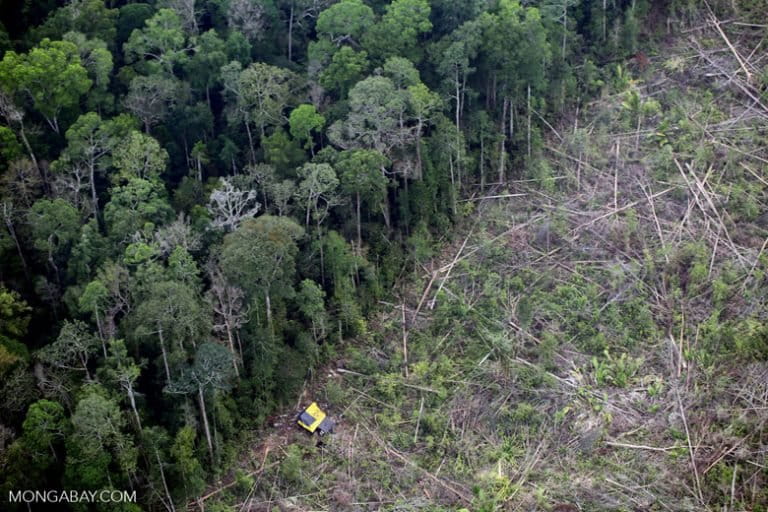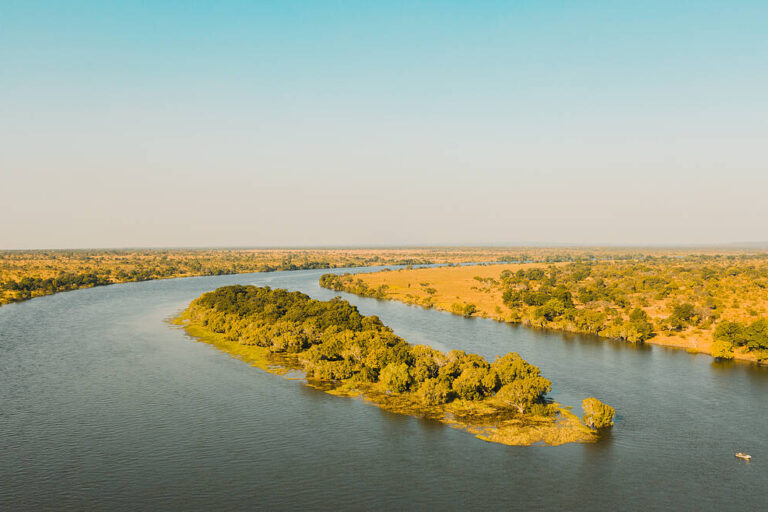- Asia Pulp & Paper (APP) and its suppliers are mired in more than a hundred land conflicts with communities in Indonesia, with a potential 600 additional disputes looming, activists say.
- Many of the conflicts center on the lack of clear boundaries between the company’s concessions and community lands.
- The company says it is working to resolve these disputes, but adds that the process is long and complicated.
- All sides agree that the government, in charge of demarcating village boundaries, needs to be more involved in the conflict-resolution process.
JAKARTA — One of the world’s biggest paper producers has left a trail of conflicts in its two-decade pursuit to develop pulpwood plantations on land also claimed by local communities in Indonesia, activists say.
Twenty-two of 38 suppliers to Asia Pulp & Paper are mired in 122 social conflicts centering on land rights, according to the analysis by a coalition of activists campaigning for the protection of peat forests in Indonesia. Barring any drastic measures or policy changes, the group says at least 602 additional conflicts are looming, adding to what it calls APP’s long legacy of land grabs, rights violations and social harm.
Most of the recorded conflicts are in Riau province, on the island of Sumatra, where APP and its suppliers manage vast swaths of acacia plantations to produce the fiber from which paper is made, according to Isnadi Esman, secretary general of Jaringan Masyarakat Gambut Riau, member of the coalition.
“From 1996 until today, these conflicts are still happening,” he said, adding there were 54 such disputes in Riau, along with 33 in the neighboring province of Jambi and 17 in South Sumatra. The group also recorded 17 conflicts in the Indonesian Bornean province of West Kalimantan and one in East Kalimantan.
The findings appear to contradict APP’s own Forest Conservation Policy, in which it states that in developing new plantations, it “will respect the rights of indigenous peoples and local communities, including recognition of customary land rights.”
“It’s been six years since APP announced its Forest Conservation Policy,” Isnadi said. “When we look at the facts on the ground, we haven’t seen any significant progress in terms of conflict resolution by APP.”
And if the company doesn’t work quickly enough to address issues that could potentially lead to more conflicts, he warned, the number could grow by a further 602 at the very least.
The activists arrived at this figure after overlaying maps of APP’s and its suppliers’ concessions with those of local villages. They identified at least 602 villages in five provinces that are located within or around these concessions. The concessions themselves span a combined 26,000 square kilometers (10,000 square miles); the overlap with the villages covers 22,000 square kilometers (8,500 square miles) of this.
“The large number of active and unresolved conflicts, together with the potential conflicts that may arise in the future, is alarming,” said Rudiansyah, director of the Jambi chapter of the Indonesian Forum for the Environment (Walhi). “APP should seriously demonstrate actions to implement its commitments related to the social issues, otherwise its FCP is no more than mere greenwash.”

History of disputes
Some of the cases documented by the activists are still ongoing. As recently as 2018, an APP subsidiary was engaged in a dispute over land boundaries with the villages of Beringin and Koto Pait in Riau’s Bengkalis district.
In South Sumatra’s Ogan Komering Ilir district, APP has invested heavily in a massive new paper mill, stoking fears among environmental activists of a significant expansion of pulpwood plantations to feed the mill, thereby potentially triggering more conflicts.
“The presence of the huge paper mill in South Sumatra raises the long list of active conflicts and potential social conflicts of pulp plantation companies with local communities, while the mill’s growing demand for fiber is putting the region’s peatlands at severe risk of fire,” the activists said.
APP has for decades been criticized for its practice of acquiring land without community consent, and causing harm to local and indigenous communities. These conflicts have often arisen from its failure to map out or mark off community-owned lands from its plantation and logging development.
In some cases the disputes have turned deadly. In early 2015, a security guards working for an APP subsidiary killed a 22-year old villager in Jambi named Indra Pelani during an altercation. The company, PT Wirakarya Sakti, had for years been engaged in a dispute with the villagers over ownership of 20 square kilometers (7.7 square miles) of customary farmland.

At the end of 2015, APP established a special conflict-resolution unit in an effort to improve its handling of such disputes. In 2017, APP set up working groups in each region in which it’s involved in conflicts with local communities, including Riau, Jambi and South Sumatra.
Agung Wiyono, who heads APP’s social conflict resolution unit, said the working groups were aimed at allowing “all parties to be involved and discuss steps to speed up the resolution process.”
After an initial burst, progress toward settling the company’s ongoing disputes has been slow. Within a year of Agung’s unit being formed, APP said it had resolved 42 percent of conflicts it had with communities. By 2017, the number was 43 percent. At the end of 2018, it was 49 percent.
“For some parties, this progress is deemed to be very sluggish even though we know that all land conflicts in Indonesia are indeed very complex,” Agung said.
Most of the still unresolved conflicts, accounting for 26 percent of all APP’s conflicts, are either long-running ones or those involving communities located in forest areas, Agung said. The second-biggest category of unresolved conflicts are those in which the company accuses communities of encroaching into its concessions.
“These villages were located within the concessions even before the company got permits [to develop the concessions],” he said, adding that APP “want[s] to respect their land rights.”
He said some of the hurdles toward resolution included incoming village chiefs rolling back progress on discussions between their predecessors and APP, as well as a lack of trust for the company and its suppliers among the villagers.
On this front, villagers sometimes fear that if their lands are formally mapped as part of the process toward reaching a resolution, then the company will take it over, Agung said.
“So they have to be convinced that the mapping [of their areas] is meant to secure their livelihoods,” he said. “But that’s not easy because maybe they have [previous bad] experiences.”
Some communities that aren’t involved in disputes with the company also don’t see a need to map out their boundaries. But Agung said this needed to be done to prevent future potential conflicts.
“Most of them have lived in harmony, side by side [with us], so there’s no confrontation,” he said. “That’s why they think that even without any mapping, they already live in peace, and so there’s no need for a mapping process. But we want this process so that there’s clarity on the boundaries and to prevent problems in the future.”
Elim Sritaba, the director of sustainability and stakeholder engagement at APP, said the company was currently trying to determine which of the unresolved conflicts should be prioritized.

Data transparency
Rudiansyah, from the environmental forum Walhi, said APP and its suppliers had much to do toward resolving the litany of outstanding disputes with local communities.
For starters, he said, the company needed to be transparent about the number of conflicts in which it’s engaged. It should publicly disclose the conflicts it has identified and those it has resolved, along with the solutions proposed, the location data, and the measurable actions taken to address and prevent more conflicts, Rudiansyah said.
“They keep telling the public that they’ve solved a certain percentage of conflicts, but they never tell us the locations, the exact number and the mechanisms that they used to resolve them,” he said. “Their claims don’t square with the facts that we’ve seen.”
He cited the example of APP’s working group in Jambi province, which, since being set up in 2017, has resolved just one of five cases it was working on there. The case in question was small in scale, centering on 130 hectares (320 acres) of land also claimed by farmers in the village of Terjun Gajah.
“They could have solved that conflict within six months,” Rudiansyah said. “But it took more than a year. That means the process didn’t go well. So if they claim they’ve solved more than 40 percent of their conflicts, we think they’re lying because they won’t show us the data.”
APP’s Elim said the fact that it took so long to settle the Terjun Gajah case showed just how complex land conflicts could be.
“The fastest progress [among the working groups] is Jambi, and even though we’ve involved many stakeholders, only one case has been solved there,” she said. “We don’t want to blame [anyone] on whether [the progress] is slow or fast, but we want [stakeholders] to know how complex it is.”
Elim also said the company did not want to disclose its conflict-resolution data out of fear it could be misused and thus hamper the resolution process. But Rudiansyah said greater transparency would help speed up the process.
“If APP said a certain village has a conflict with the company, then it means other villages won’t be able to lay claim to that land,” he said. “And if civil society is involved, they can immediately follow up on the case. Locals can also apply to get their cases processed immediately. Everything will become objective and transparent.”

Role of government
One point all sides agree on is that the government needs to be involved in the conflict-resolution process.
Yando Zakaria, an Indonesian anthropologist who studies land conflicts, said this was especially the case for disputes arising over a lack of unclear boundaries between villages and concessions.
“No matter how hard APP works to solve these types of conflicts, they’ll never be truly solved,” he told Mongabay. “Because these conflicts are related to village boundaries, which are the responsibility of the home affairs ministry, the forestry ministry and, if they’re related to plantations, also the agrarian ministry. So why does APP keep working to solve these conflicts? They should be handed over [to the government].”
Yando said the company’s regional working groups lacked the authority to settle these disputes effectively.
“They’re just a forum for consultation,” he said. “So actually, APP can only detect conflicts, and if the conflicts are related to compensation, then they can solve it. But if they’re related to boundaries, then it’s impossible [for APP to solve].”
But the government currently lacks any mechanism to take over land conflicts stemming from hazy boundaries, Yando said. “Since there’s no mechanism, these conflicts are kept by APP to themselves,” he said. “We’ve made progress at the company level, but outside of that, we can’t make progress because there’s no mechanism [for the government] to take over the conflicts.”
The coalition keeping track of APP’s conflicts said the government could step in by reviewing the plantation permits issued to APP and its suppliers, and revoking any for concessions disputed by local communities.
“We ask the Ministry of Environment and Forestry to immediately review the permits because we see a potential for conflicts in 602 villages, which could turn violent,” Rudiansyah said. “The ministry should give these communities access to the land directly through schemes like the social forestry program.”
The coalition also said consumer action against APP products, used by retailers around the world in their paper packaging, could spur the company to speed up the conflict-resolution process.
“Until these conflicts are fully resolved in an open and transparent way, APP products should not be accepted in the global market,” Rudiansyah said. “As long as the global market keeps buying APP’s products, consumers are contributing to the suffering of people in these five provinces.”
Banner image: A pulpwood plantation in Indonesia’s Riau province. Image by Rhett A. Butler/Mongabay.














